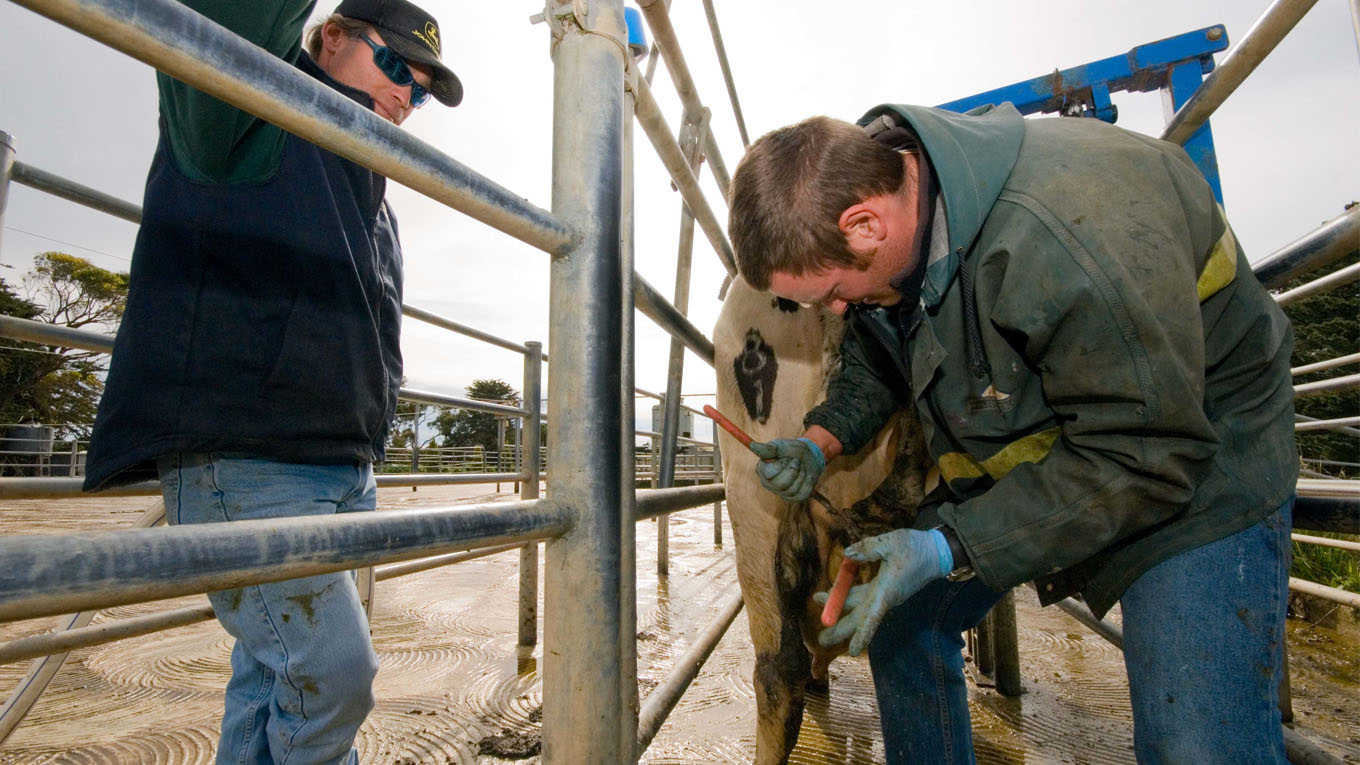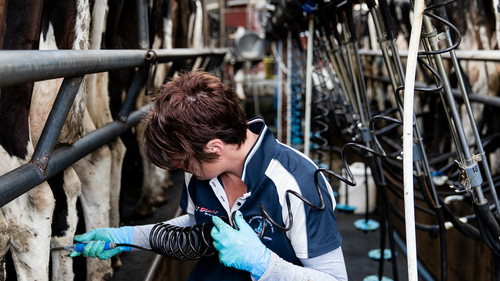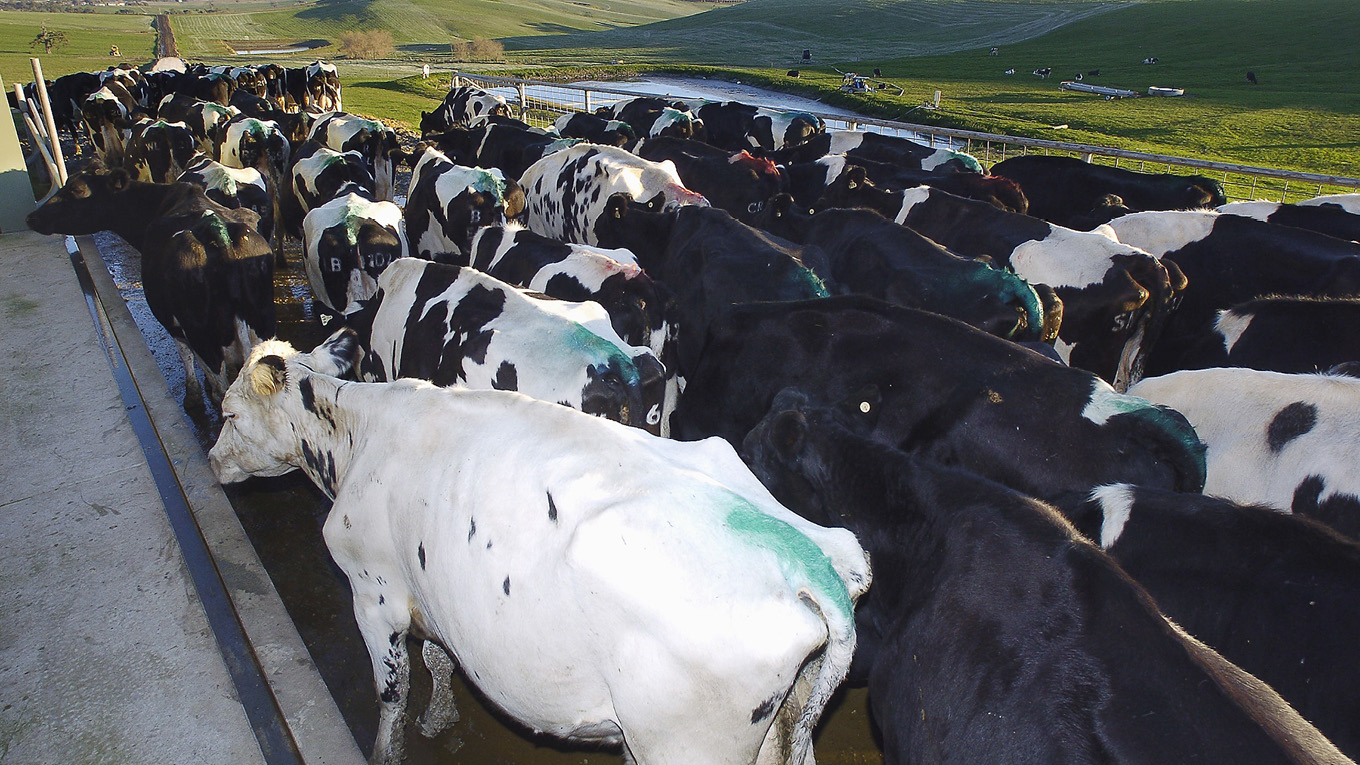Disbudding
Most Australian dairy cattle are born with horns, which need to be removed to prevent injury to other stock and to stock handlers. This can be done by either disbudding or dehorning.
Disbudding is when the horn buds are removed before the horn attaches to the skull, which normally occurs by the time calves reach six to eight weeks of age. Dehorning refers to removing the horns after this age.
Dehorning is a more invasive procedure with extra risks of complications, such as infection, fly strike and excessive bleeding. Dairy Australia encourages disbudding calves before six to eight weeks of age, rather than dehorning cattle at an older age.
Disbudding and pain relief
Disbudding is best performed when the calf is between two and six weeks old. At this age, the calves are robust enough and the horn bud can be easily felt in the skin but the horn has not yet attached to the skull.
A hot iron usually heated by gas is used to cauterise the developing horn bud. Caustic paste is not registered for use for disbudding in Australia.
-
Guide to cautery disbudding calves
PDF, 290.3 KB
Pain relief is strongly recommended as it decreases stress and pain for the calves and makes the procedure easier for the operator.
Pain relief options include veterinarian disbudding and an over-the-counter anaesthetic and antiseptic spray.
Veterinarian disbudding involves sedation of calves, cornual nerve blocks using local anaesthetic and long-acting pain relief. This is a veterinary procedure but the advantages outweigh any additional costs.
The calves lie down and sleep after they are sedated, which removes stress for both the calves and operators. The local anaesthetic blocks the pain of the hot iron and the anti-inflammatory injection provides ongoing pain relief for up to three days. Other procedures, such as ear tagging, vaccination and removal of spare teats can easily be done while the calves are sleeping.
Studies have shown that calves recover quicker and have less growth check in the days following disbudding if local anaesthetic and anti-inflammatory drugs are used. These drugs are only available by prescription from veterinarians and their availability may vary in different regions.
Non-veterinarian topical pain relief spray gel, available from rural resellers and vets, can be used alone or with other longer lasting pain relief options to provide more comprehensive pain relief when disbudding calves.
-
Providing pain relief to calves for disbudding factsheet
PDF, 175.77 KB
The following videos demonstrate how to disbud calves at less than two months of age using the hot iron cautery technique with pain relief:
Dehorning
Dehorning involves cutting the horn with a dehorner. This is more painful than disbudding and is accompanied by marked bleeding and an open wound over the horn base. The Australian dairy industry discourages routine dehorning at any age. It is a legal requirement under the Australian Animal Welfare Standards and Guidelines for Cattle that appropriate pain relief is used when dehorning cattle over six months of age.
After care
After disbudding or dehorning, the wound should be kept dry for at least 24 hours. Delay the procedure if rain is expected unless the cattle can be housed.
Check the animals regularly, at least daily, in the week following the procedure for signs of bleeding or infection. If calves were sedated, ensure they are sitting upright immediately afterwards so they do not regurgitate stomach contents onto their lungs. Delay feeding the calves until they are alert and back on their feet, which should only take a few hours.
Polled genetics
Some dairy sires are polled or carriers of the polled gene and Dairy Australia encourages selecting for polled animals through the Good Bulls Guide. The availability of polled genetics is improving but it is important to avoid inbreeding when selecting back to polled for the second generation. Consult with DataGene or your genetics supplier for more information.
Legalities
Australian Animal Welfare Standards and Guidelines for Cattle – Dehorning and Disbudding
These Standards (essential requirements) and Guidelines (additional practices that may be relevant) are the legal requirements for the welfare of cattle, and have been endorsed federally, by all states and by the Australian Dairy Industry Council (ADIC). These have been legislated by South Australia and New South Wales and are in the legislative process for all other states.
Please note there are no caustic paste products registered for disbudding in Australia and these are illegal to import.
More information on the Standards and Guidelines can be found at here. Below are the Standards and Guidelines which refer to disbudding and dehorning.
Standards (essential requirements)
S6.1 A person castrating or dehorning cattle must have the relevant knowledge, experience and skills, or be under the direct supervision of a person who has the relevant knowledge, experience and skills.
S6.4 A person in charge must ensure the use of appropriate pain relief when dehorning cattle unless cattle are: 1) less than six months old; or 2) less than 12 months old if at their first yarding and where the later age is approved in the jurisdiction.
S6.6 A person must use appropriate tools and methods to dehorn cattle and disbud calves.
Guidelines (additional practices that may be relevant)
G6.19 Preference should be given for breeding of naturally polled cattle.
G6.20 Disbudding should be done in preference to dehorning.
G6.21 Hot-iron cautery should be used in preference to excision methods for disbudding calves.
G6.22 Calves should be disbudded or dehorned as young as possible.


